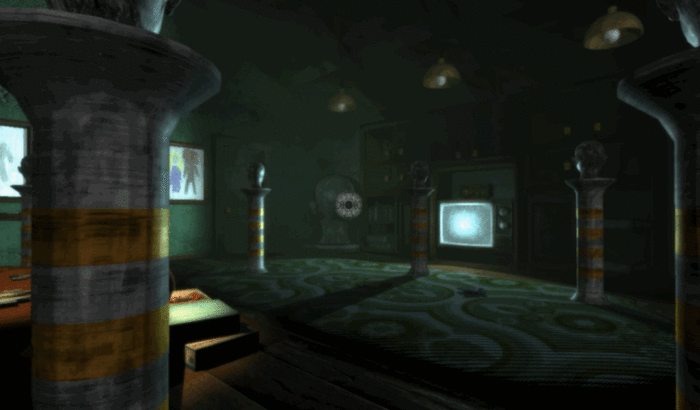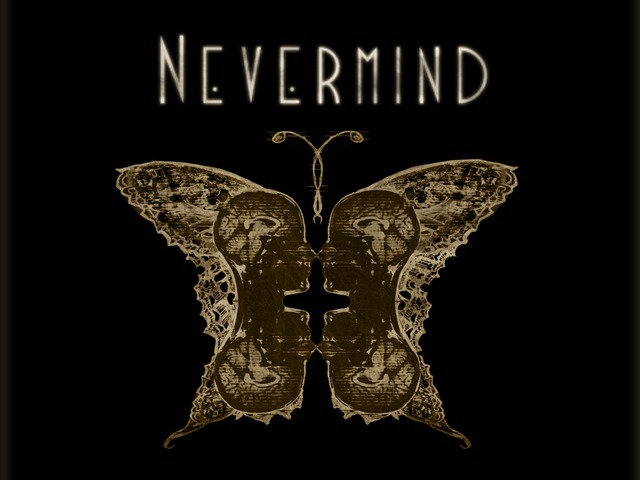 Erin Reynolds on the Return of VR Survival Horror, Nevermind.
Erin Reynolds on the Return of VR Survival Horror, Nevermind.
with Julie Morley
[divider]Back in August, we interviewed Erin Reynolds, the creator of Nevermind and founder of Flying Mollusk. Around that time, the Nevermind team had just partnered with Intel and received enough funding to continue development and establish studio quarters. In the interview, there was talk of a Kickstarter campaign in the near future and the time has come! On October 8th, a second Nevermind Kickstarter campaign was launched, this time asking for significantly less. I was fortune to talk to Erin about the progress of Nevermind and what’s going on with the campaign. Here’s what she had to say.
[divider]Cliqist : Since we last spoke, what progress has Nevermind made, development-wise?
Erin Reynolds : We’ve been hard at work developing an Intel® RealSense™camera-focused revamped experienced of the old, academic proof of concept version of Nevermind. Since July, we have been “up-rezzing” the first level (the one most people are familiar with), the “Clinic” area (which serves as a hub for all levels), and have been polishing gameplay, exploring gesture interactions, and more! It has been a very exciting couple of months!
Cliqist : What is the funding goal you’re aiming for in the new Kickstarter? What will this cover?
Erin Reynolds : The funding goal for our “Round 2” Kickstarter will be much smaller than that of our first one last February. With Intel’s support, we’re now confident that we’ll be able to create an amazing experience for PCs regardless of how this Kickstarter ultimately turns out.
However, it has always been very important to us to make Nevermind as accessible as possible – this means bringing it to a variety of platforms (such as Mac and Xbox One) and investing R&D time into making Nevermind compatible with as many mainstream sensors out there as possible. Furthermore, we are also huge fans of the Oculus Rift and believe that the immersiveness of Nevermind would be a great fit for a virtual reality experience. So, if we hit our funding goal, it will give us the resources needed to bring Nevermind to these additional platforms and integrate more sensors. Any funds that exceed the goal will go toward developing additional content and levels beyond the three we already plan to build.

Cliqist : Aside from Xbox One and Oculus Rift, what other sensors/consoles will Nevermind expand to? Per chance is PS4 in its future?
Erin Reynolds : We’re pretty open to exploring all platforms. Console-wise, Xbox One is a natural fit due to the heart rate sensing capabilities of the Kinect 2.0 sensor. We would have to figure out a clever solution to incorporating biofeedback into platforms like PS4 (or offer it without the biofeedback component) – however, there are so many great new consumer friendly biofeedback sensors coming to market seemingly every day that anything is possible. This growing popularity and availability of heart rate sensors on the market is one of the key reasons why we now feel confident we can finally bring the full Nevermind experience to Macs. Previously, we were restricted to PCs since the Garmin Chest strap (the sensor we’ve used in the past) wasn’t fully Mac compatible – now there are many more potential options out there (like the upcoming Apple Watch) that open the door to making the biofeedback component of Nevermind accessible on more platforms than ever before.
Cliqist : Could Nevermind expand to mobile platforms like tablets or Wii U and PSP VITA?
Erin Reynolds : Absolutely – we’re always thinking about ways to bring a variation of Nevermind to mobile platforms. One idea we’ve discussed internally is, instead of offering a direct port of Nevermind to phone, tablet, or mobile consoles like the PSP Vita, potentially creating a companion experience for these platforms that would enhance or build off of the main, larger game. However, for the foreseeable future, we plan to remain focused on the main version of Nevermind.
Cliqist : Before the partnership with Intel, players wore chest straps and heart/pulse monitors. But Intel’s RealSense Camera removes the need for that. How does the RealSense Camera capture the anxiety, nervousness, and fear of the Nevermind player without relying on those? Or is this device more concentrated on immersing the player?
Erin Reynolds : The RealSense camera is a super cool piece of technology. Without getting into all the nuts and bolts about it, so to speak, it reads heart rate via fluctuations in the player’s facial skin tone. From there, we calculate heart rate variability from the heart rate data just as we would from the Garmin or any other sensor. Additionally, the device does help take immersion to a new level – not only does it eliminate the need to wear a chest strap that can be a little obtrusive, it also offers depth-based gesture control – allowing the player to physically interact with the gameworld. We have some really cool things planned for gesture interaction – but I don’t want to spoil too many of the surprises.
Cliqist : With the money obtained from Kickstarter and the addition a wider variety of sensor possibilities, will more story content and levels be created or is that a planned stretch goal?
Erin Reynolds : We’re really hoping that we’ll be able to create more content – as such, most of our stretch goals will be focused around creating more levels and patient stories around psychological trauma.

Cliqist : Is another demo or alpha release in the near future?
Erin Reynolds : First off, happy to announce that we’ll be making the original 2012 academic proof of concept available to everyone via the Kickstarter page. Then, likely in early 2015, we’ll be making the new version that we’ve been working on these past few months available via Steam Early Access. This will not only give everyone in the Nevermind community a sneak peek at what we’ve been working on, but also the ability to contribute feedback and ideas to help shape the experience moving forward. Of course, we’ll be offering Steam Keys to this Early Access version via the Kickstarter – so I encourage anyone who is interested in checking out this version of Nevermind to pledge, as it will likely be cheaper via the Kickstarter campaign than it will be when we make it available on Early Access in a few months.
Cliqist : With the incorporation of additional sensors and platforms, will the release date be pushed back farther? Or is 2015 still planned?
Erin Reynolds : We’re currently working toward an October 2015 final release date. While game development can be fickle (especially experimental game development that involves new emerging technology), so far everything is tracking well!
[divider]Thanks to Erin for taking the time to answer our questions! Be sure to take a look at the new Nevermind Kickstarter campaign. You can also track its progress by taking a look at our Campaign Calendar.
[divider][Google][pinterest][follow id=”Cliqist” size=”large” count=”true” ] [author image=”http://cliqist.com/wp-content/uploads/2014/01/julie.jpg” ]Julie Morley is a freelance writer and comic artist from Spring, Texas. She attended the Academy of Art University for two years, studying Animation and Illustration. Whilst here, she learned about writing comic scripts, storyboards, and general storytelling. Since leaving college, she has been working on personal comic projects, stories, and illustrations. She aspires to release a self published comic within two years. For the majority of her life, she has been playing console games, typically being third-person shooters and sandboxes. Her favorite game of existence is Dark Cloud II (Dark Chronicle) and her favorite Indie game is Gone Home.[/author]





